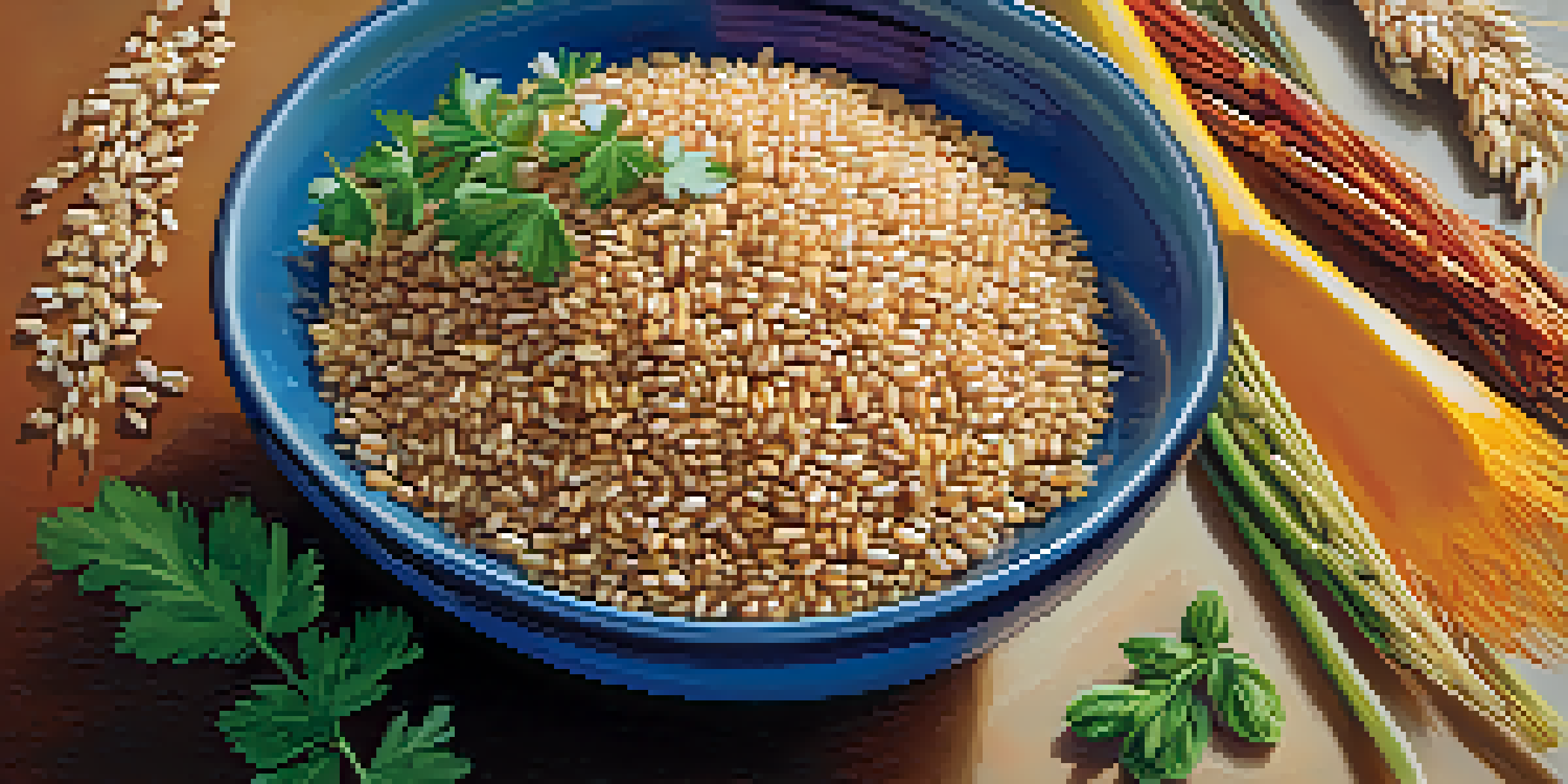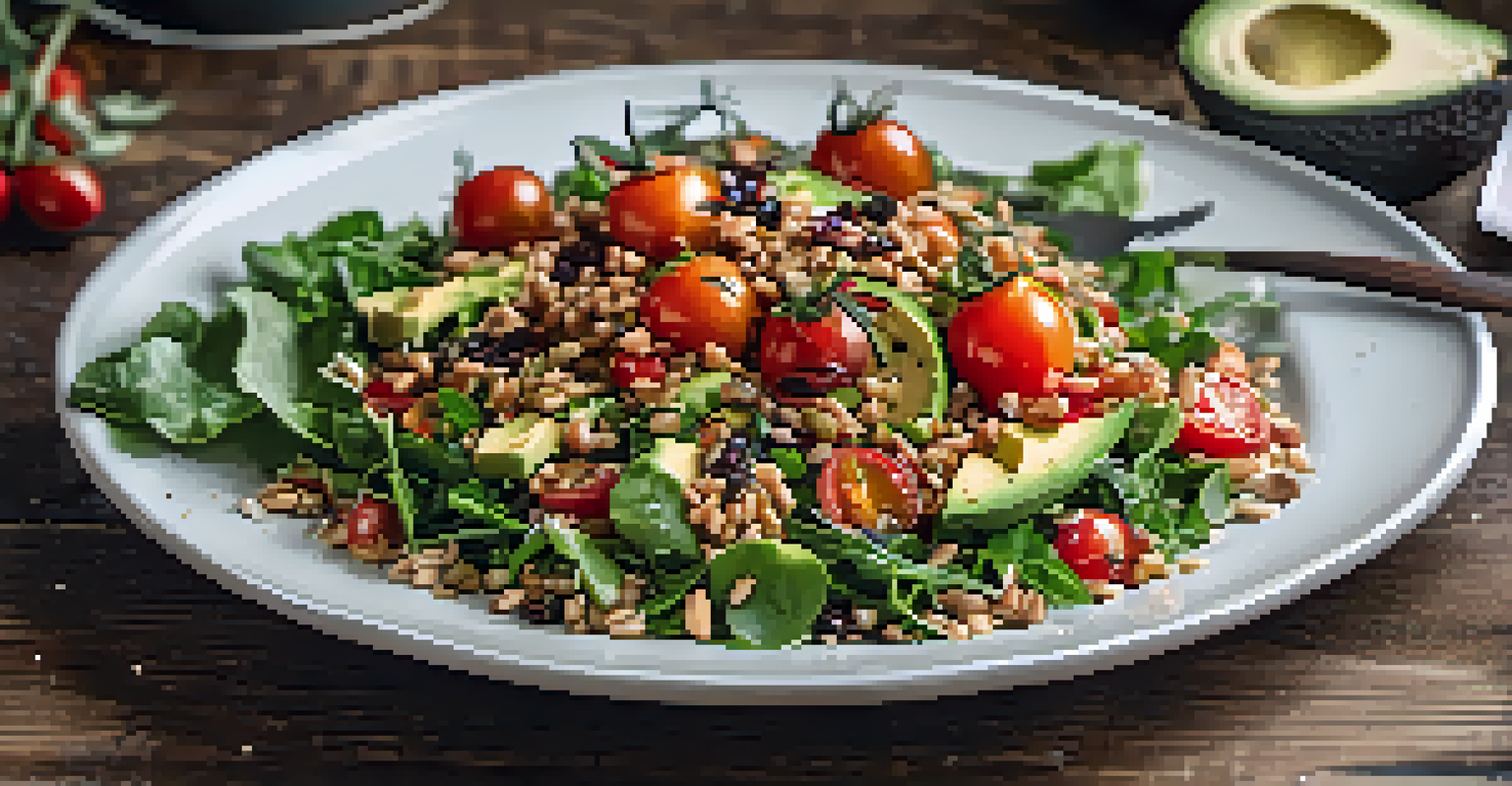Whole Grains: Essential Plant-Based Proteins for Your Diet

What Are Whole Grains and Why They Matter
Whole grains include all parts of the grain kernel: the bran, germ, and endosperm. Unlike refined grains, which have been stripped of these nutritious components, whole grains retain their natural goodness. This makes them a vital part of a balanced diet, providing important nutrients and energy.
Let food be thy medicine and medicine be thy food.
Incorporating whole grains into your meals can lead to improved health outcomes, such as better digestion and reduced risk of chronic diseases. They are packed with fiber, which helps keep you full and satisfied. So, when you choose whole grains, you’re not just making a meal choice; you’re investing in your health.
Related Resource
Examples of whole grains include brown rice, quinoa, barley, and whole wheat. Each of these grains has unique flavors and textures, making them versatile ingredients in various dishes. By exploring whole grains, you can find new favorites that enhance your diet.
Whole Grains as Plant-Based Proteins
While whole grains are not typically high in protein compared to animal products, they still provide a valuable source of plant-based protein. This protein is essential for muscle repair, hormone production, and overall health. Including whole grains in your diet can help meet your protein needs without relying solely on meat.

For instance, one cup of cooked quinoa contains about 8 grams of protein, making it a great alternative to rice. Pairing whole grains with legumes can create a complete protein source, providing all the essential amino acids your body needs. This means you can enjoy meals that are both delicious and nutritious.
Whole Grains Boost Health
Incorporating whole grains into your diet enhances nutrition, supports digestion, and reduces the risk of chronic diseases.
By integrating whole grains into your daily meals, you not only boost your protein intake but also enhance your diet with fiber and vitamins. Think of whole grains as a building block for a balanced plate, contributing to both health and satisfaction.
Nutritional Benefits of Whole Grains
Whole grains are rich in essential nutrients such as B vitamins, iron, magnesium, and antioxidants. These nutrients play crucial roles in maintaining energy levels, supporting brain function, and promoting heart health. By choosing whole grains, you can enjoy these benefits while also adding variety to your meals.
Whole grains are the foundation of a healthy diet, providing essential nutrients and energy.
For example, the fiber found in whole grains helps regulate blood sugar levels, making them a smart choice for those managing diabetes. Additionally, the antioxidants in whole grains can help combat inflammation and oxidative stress in the body. These benefits contribute to long-term health and well-being.
Related Resource
Including a variety of whole grains in your diet ensures you receive a broad spectrum of nutrients. This diversity not only enhances your health but also keeps your meals exciting and flavorful.
How to Incorporate Whole Grains into Your Diet
Getting whole grains into your diet is easier than you might think. Start by swapping out refined grains for their whole counterparts in your favorite recipes. For example, use whole wheat bread instead of white bread or brown rice instead of white rice.
You can also experiment with new whole grain options. Try adding farro to your salads, or use oats in your baking. The key is to be adventurous and find whole grains that you enjoy, which will make it easier to stick with it long term.
Plant-Based Protein Source
Whole grains provide a valuable source of plant-based protein, especially when paired with legumes for a complete amino acid profile.
Meal prepping with whole grains can also simplify your cooking process. Make a big batch of quinoa or barley at the beginning of the week, and use it in various dishes, from stir-fries to breakfast bowls. This not only saves time but also ensures you have healthy options ready to go.
Whole Grains in Different Cuisines
Whole grains are a staple in many cultures around the world. From the rice of Asia to the couscous of North Africa, these grains have been nourishing people for centuries. Exploring global cuisines can introduce you to a variety of whole grains and cooking methods.
For example, consider trying whole grain pasta in your Italian dishes, or using bulgur wheat in your Middle Eastern recipes. Each type of grain brings its own unique flavor and texture, enhancing your meals and providing new culinary experiences.
Related Resource
By embracing whole grains from different cuisines, you not only diversify your diet but also satisfy your taste buds. It’s a delicious way to enjoy the health benefits of whole grains while discovering new flavors.
Common Misconceptions About Whole Grains
There are several myths surrounding whole grains that can deter people from incorporating them into their diets. One common misconception is that whole grains are bland or unappetizing. In reality, whole grains come in a variety of textures and flavors that can add depth to any meal.
Another myth is that whole grains are difficult to cook. While some grains may require longer cooking times, many options are quick and easy to prepare. For instance, instant oats can be ready in just a few minutes, making them a convenient breakfast choice.
Culinary Versatility of Grains
Exploring different whole grains in global cuisines adds variety and excitement to meals while enhancing their health benefits.
By debunking these misconceptions, you can open yourself up to the benefits of whole grains. Remember, it’s all about finding the right grains and recipes that suit your taste and lifestyle.
The Future of Whole Grains in Diets
As more people become aware of the health benefits of whole grains, their popularity continues to rise. This shift towards healthier eating habits is encouraging food manufacturers to innovate and create new whole grain products. From whole grain snacks to fortified cereals, the options are expanding.
The trend towards plant-based diets further emphasizes the importance of whole grains as a source of nutrition. As individuals seek to reduce their meat consumption, whole grains provide a valuable alternative for protein and essential nutrients. This evolution in dietary preferences highlights the role of whole grains in modern nutrition.

Looking ahead, we can expect to see even more emphasis on whole grains in health and wellness discussions. As research continues to unveil their benefits, incorporating whole grains into our daily lives will become increasingly important for maintaining optimal health.